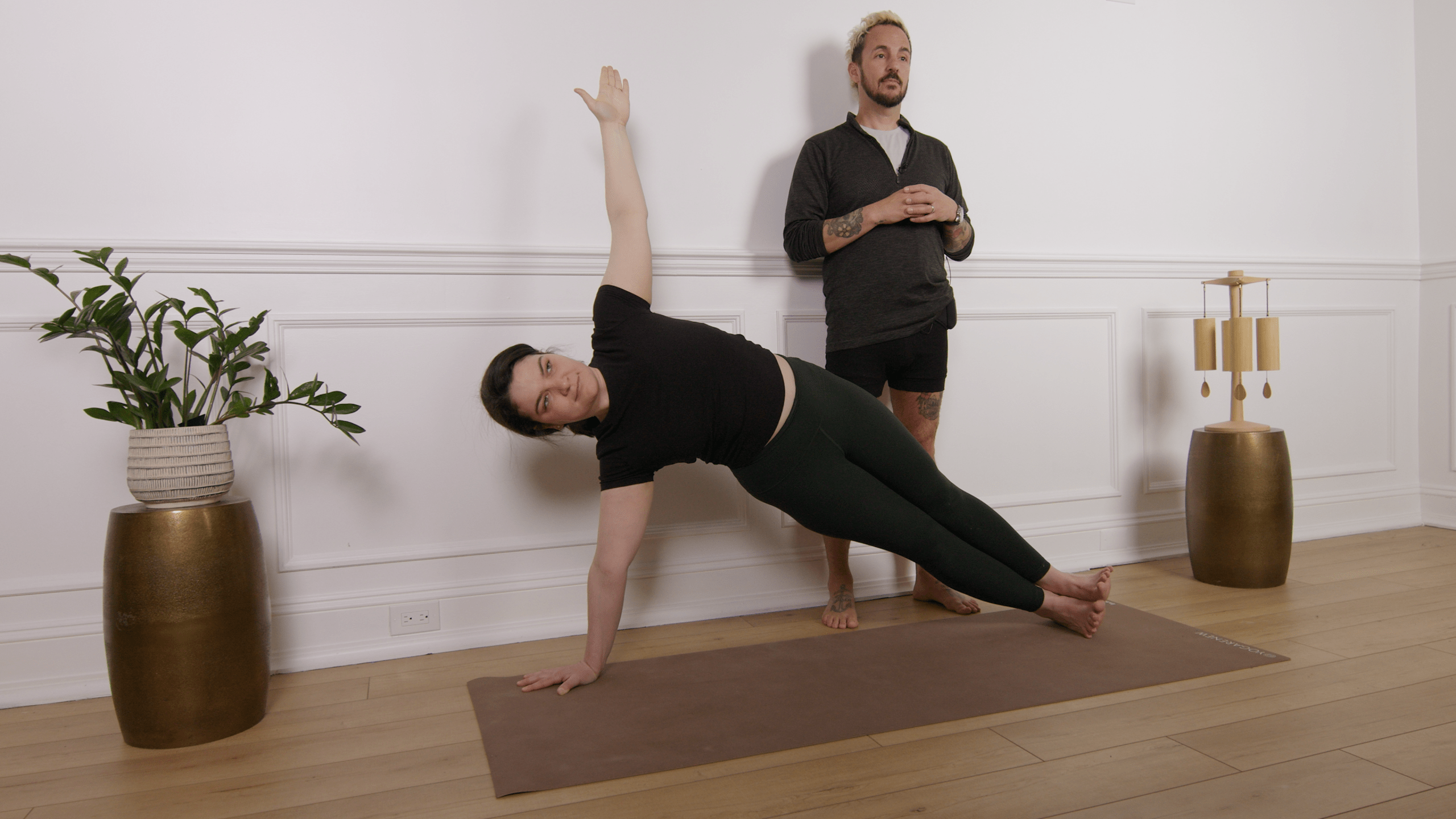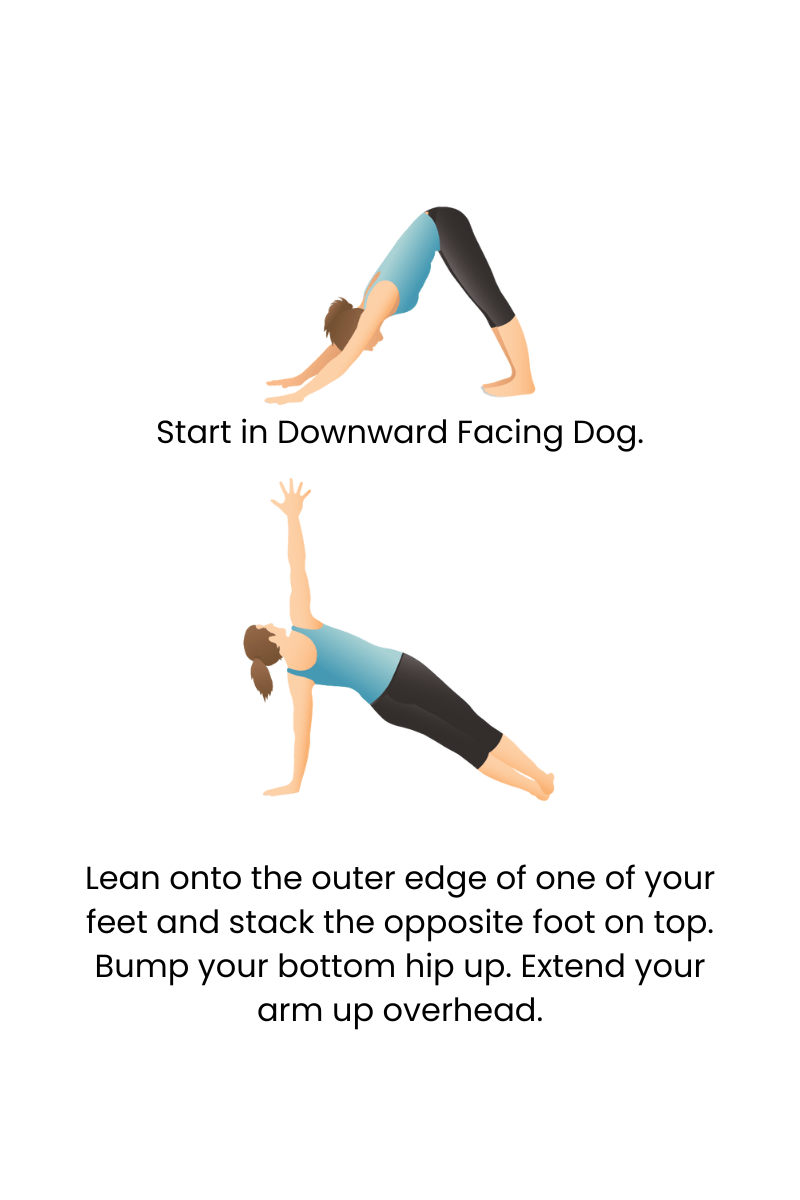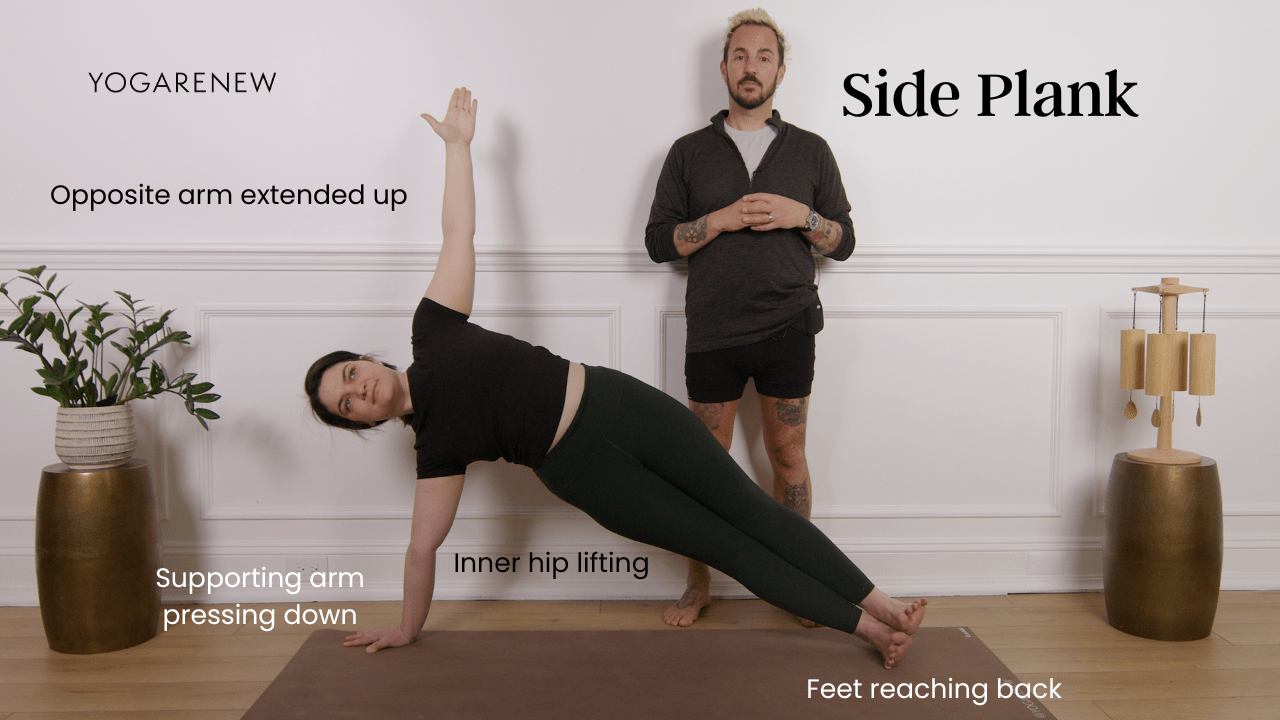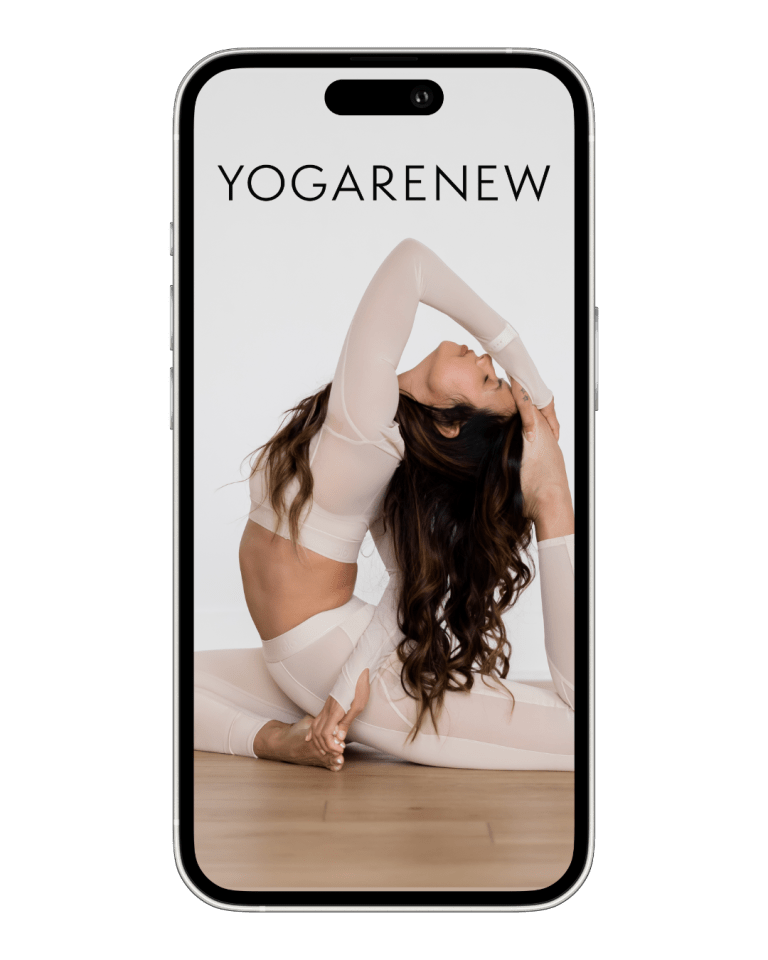What is Side Plank?
English Name: Side Plank
Sanskrit Name: Vasiṣṭhāsana (pronounced vah-sish-TAH-suh-nuh)
Category: Arm Balance, Strength, Core, Intermediate

English Name: Side Plank
Sanskrit Name: Vasiṣṭhāsana (pronounced vah-sish-TAH-suh-nuh)
Category: Arm Balance, Strength, Core, Intermediate
Side Plank, or Vasisthasana, is a powerful balancing pose that strengthens the arms, shoulders, and core while improving overall stability. Named after the sage Vasistha, this posture emphasizes muscular control, mental focus, and alignment along a single plane.
Often integrated into Vinyasa flows or core-strengthening sequences, Side Plank teaches how to stabilize the body through deep engagement and precise positioning.


Lower Knee to the Mat: Keep the bottom knee down to reduce intensity
Use a Block Under Supporting Hand: Helps with wrist or shoulder discomfort
Practice Near a Wall: Build confidence with the back body supported
Forearm Side Plank: Takes pressure off the wrist while still strengthening the core
Tree Pose Leg: Place top foot on the inner thigh of the bottom leg
Star Side Plank: Lift the top leg and arm to form a star shape
Grabbing the Big Toe (Vasisthasana B): Extend the top leg up and hold the toe with top hand
Side Plank Crunches: Add core activation by bringing top knee to top elbow
Wild Thing Transition: Flow from Side Plank into a backbend variation
Side Plank is an empowering pose that blends strength, stability, and stillness. It challenges you to support yourself with integrity—both physically and mentally. As you balance on one arm and one foot, you learn to trust your body’s capacity to lift, stabilize, and align under pressure.
With regular practice, Side Plank builds confidence and strength from the inside out—making it a valuable addition to any yoga sequence.
Yes—with modifications. Beginners can keep the bottom knee down or practice with a wall for support.
Try a forearm Side Plank or place a wedge or folded towel under the palm to reduce pressure.
Start with 2–3 breaths and gradually increase to 5–10 breaths as you build strength.
Absolutely! It’s great for daily core work—just vary the intensity and use proper alignment.

Explore classes & pose tutorials for any style, format, duration or experience level with a free account in the YogaRenew app. Or subscribe and gain access to workshops, live classes and more.